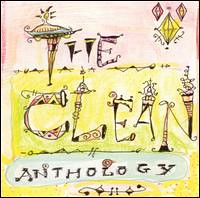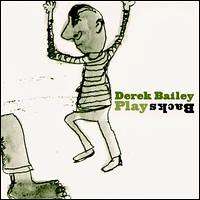From a Land Down Under
Artists: Bailter Space; Alec Bathgate; The Chills; The Clean; David Kilgour; Chris Knox; Tall Dwarfs
Albums: Wammo (BS); Gold Lamé (AB); Submarine Bells (Chills): Unknown Country (Clean); Anthology (Clean); David Kilgour & the Heavy Eights (DK); Songs of You & Me (CK); Yes!! (CK); 3EPs (TD)
Source: Bought used (BS, Clean, DK, CK); bought new (Chills, TD)
Back in junior/high school, I scoffed at the kids who bought their clothes by the label. To my way of thinking, draping yourself in Calvin Klein or Benetton or something like that just showed a lack of imagination – where’s the personal stamp in picking something based only on the name on the label?
Noble thoughts, to be sure, but at the time I thoroughly missed the irony inherent in my own label-driven choices: if a band was on SST or Dischord, for example, what more did you need to know? Later on, I would rely on Teenbeat, Matador, Merge (and, retroactively, Blue Note, Prestige and Impulse) and other labels whose bands didn’t really sound alike, but had logos that might as well have been the music-nerd Good Housekeeping Seals of Approval.
In the mid-late 1980s, one of the labels of distinction was Flying Nun, run out of New Zealand. The sheer volume of amazing music that emerged from the antipodean nunnery seems barely plausible: The Clean (and all of its side projects), Chills, Straitjacket Fits, Tall Dwarfs, Verlaines etc. They didn’t all necessarily have a common sound (though it’s not unreasonable to wonder if the NZ Ministry of Education put the Velvet Underground on the national curriculum), but it was often pretty easy to pick the Flying Nun bands out in a blindfold test. There was a kind of just-polished rawness, melodies that tugged against the chugging music, and a willingness to experiment with (but not reject out of hand) the way a poppish-rock song should sound.
The Chills, Tall Dwarfs and Straitjacket Fits were my first introduction to the label, and I never really looked back; to this day, I can’t help thinking Leonard Cohen’s “So Long, Mariannne” sounds dreadfully weak up against SF’s reverby cover of the tune on Hail. The best part is how little it can sound like any of these bands is doing – Tall Dwarfs/Chris Knox/Alec Bathgate can sound willfully weird, but also like all of the Beatles at once, and no one would blame a pair of ears for just hearing a Velvety garage-pop band when listening to The Clean, but there’s something so endearing and, dare I say it, special about the band. “Point That Thing Somewhere Else” goes on for nearly six minutes, and I’ve never failed to be disappointed when it ends way too soon.
SISOSIG? This is a big pile, and there’s nothing to cut from The Beast here. Some of my favorites (Yo La Tengo, Mac McCaughn, et al) claim these bands as guiding lights, and there’s no doubting it. From Bailter Space’s swirling noise-pop to Submarine Bells’ almost heartbreakingly beautiful love songs (up to and including the couplet, “Effloresce and deliquesce/Carefree sparkling effervesce”), this is underground rock music of a singular distinction, and instead of thinking about getting rid of any, I really should be pledging to listen to it more regularly.
Albums: Wammo (BS); Gold Lamé (AB); Submarine Bells (Chills): Unknown Country (Clean); Anthology (Clean); David Kilgour & the Heavy Eights (DK); Songs of You & Me (CK); Yes!! (CK); 3EPs (TD)
Source: Bought used (BS, Clean, DK, CK); bought new (Chills, TD)
Back in junior/high school, I scoffed at the kids who bought their clothes by the label. To my way of thinking, draping yourself in Calvin Klein or Benetton or something like that just showed a lack of imagination – where’s the personal stamp in picking something based only on the name on the label?
Noble thoughts, to be sure, but at the time I thoroughly missed the irony inherent in my own label-driven choices: if a band was on SST or Dischord, for example, what more did you need to know? Later on, I would rely on Teenbeat, Matador, Merge (and, retroactively, Blue Note, Prestige and Impulse) and other labels whose bands didn’t really sound alike, but had logos that might as well have been the music-nerd Good Housekeeping Seals of Approval.
In the mid-late 1980s, one of the labels of distinction was Flying Nun, run out of New Zealand. The sheer volume of amazing music that emerged from the antipodean nunnery seems barely plausible: The Clean (and all of its side projects), Chills, Straitjacket Fits, Tall Dwarfs, Verlaines etc. They didn’t all necessarily have a common sound (though it’s not unreasonable to wonder if the NZ Ministry of Education put the Velvet Underground on the national curriculum), but it was often pretty easy to pick the Flying Nun bands out in a blindfold test. There was a kind of just-polished rawness, melodies that tugged against the chugging music, and a willingness to experiment with (but not reject out of hand) the way a poppish-rock song should sound.
The Chills, Tall Dwarfs and Straitjacket Fits were my first introduction to the label, and I never really looked back; to this day, I can’t help thinking Leonard Cohen’s “So Long, Mariannne” sounds dreadfully weak up against SF’s reverby cover of the tune on Hail. The best part is how little it can sound like any of these bands is doing – Tall Dwarfs/Chris Knox/Alec Bathgate can sound willfully weird, but also like all of the Beatles at once, and no one would blame a pair of ears for just hearing a Velvety garage-pop band when listening to The Clean, but there’s something so endearing and, dare I say it, special about the band. “Point That Thing Somewhere Else” goes on for nearly six minutes, and I’ve never failed to be disappointed when it ends way too soon.
SISOSIG? This is a big pile, and there’s nothing to cut from The Beast here. Some of my favorites (Yo La Tengo, Mac McCaughn, et al) claim these bands as guiding lights, and there’s no doubting it. From Bailter Space’s swirling noise-pop to Submarine Bells’ almost heartbreakingly beautiful love songs (up to and including the couplet, “Effloresce and deliquesce/Carefree sparkling effervesce”), this is underground rock music of a singular distinction, and instead of thinking about getting rid of any, I really should be pledging to listen to it more regularly.



